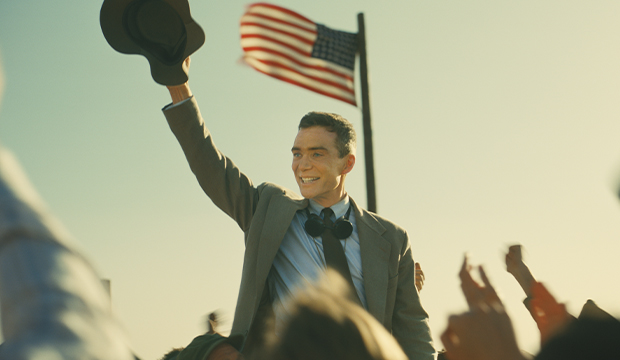
A folie a deux is defined as a shared delusion between two people in close association. So maybe the idea that the “Joker” sequel would perform as well as its predecessor was always meant to be suspect.
Over the weekend, “Joker: Folie a Deux” crashed with audiences after finding little support among critics. The Todd Phillips musical drama about the famed Batman villain earned less than $37.8 million at the domestic box office, a far cry from the record-setting $96 million with which the original debuted in 2019. That film grossed a then-record $1.079 billion worldwide, the most money ever for an R-rated release at the time. Now, the expectations are that “Joker: Folie a Deux” might not top $300 million. The project earned a D-grade from ticket buyers on CinemaScore, a service that polls moviegoers about their theatrical experience. Critics, many of whom thought the first film was subpar, eviscerated the sequel too — the film’s Rotten Tomatoes score is 33 percent (a smidge higher than the 31 percent audience score).
The bad headlines about its box office and even worse reviews had many speculating that this was the end of the line for “Joker: Folie a Deux” as an awards contender, a shocking fall from grace after the Academy embraced the original. A subversive and controversial drama that placed the classic comic book villain into a milieu adjacent to Martin Scorsese films like “Taxi Driver” and “The King of Comedy,” Phillips’s R-rated “Joker” won the Golden Lion at Venice in 2019 and landed 11 Oscar nominations including Best Picture. Lead actor Joaquin Phoenix and composer Hildur Guðnadóttir both won Oscars in their respective categories; the film was also arguably win-competitive elsewhere, including Best Cinematography, Best Editing, and Best Hair and Makeup.
Given the original film’s success across the board, expectations for “Joker: Folie a Deux” were sky-high heading into the fall. Phillips had reteamed with many of his collaborators, including Guðnadóttir and, obviously, Phoenix – and he added Lady Gaga to the mix as well. The Oscar-winning singer and actress was cast as Lee Quinzel, a.k.a. Harley Quinn, a catalyst who drives the story engine and gets to participate in many of the musical numbers. (If “Joker” was Phillips’s take on “Taxi Driver” and “The King of Comedy,” “Folie a Deux” feels like “New York, New York” mixed with “Shutter Island.”) As with “Joker,” the sequel was selected to debut at the Venice Film Festival, where fest boss Alberto Barbera served as an unofficial hype man.
“I think it’s one of the most daring, brave, and creative films in recent American cinema,” Barbera told Deadline before the fest began. “And I think it really confirms Todd Phillips as one of the most creative directors working at the moment.” Asked about its chances to resonate with Oscar voters, Barbera said he would “be surprised” if Academy members didn’t respond to the film.
“It’s a continuation of the story but the film is completely different from the first film,” he said. “If you’re expecting the same in terms of violence or other things, you’ll be surprised. When I saw the film in L.A. at the beginning of February there were four or five of us in the screening room, including co-writer Scott Silver, and we were astonished, our mouths were open at the end of the screening. It is a darker film.”
Even after its Venice premiere and some tepid reviews, the sequel was still tracking to debut with more than $70 million during opening weekend – a dip from the high-water mark of the original, but still a hefty number for a sequel, especially one with an R-rating. (“Dune: Part Two,” for instance, earned $81.5 million during its opening weekend.)
“The question became, ‘How can we top ourselves?’” Phillips said in an interview with Variety published in August before the “Joker” sequel premiered in Venice. “And you can only do that if you do something dangerous. But there were days on set where you’d look around and think, ‘Holy fucking shit! What did we do?’”
For many, that’s now an even more appropriate question. “Joker: Folie a Deux” actively attempts to interrogate what fans and audiences want from “Joker” anyway. The film opens with an animated sequence done in the style of Looney Tunes cartoons (animated by “The Triplets of Belleville” animator Sylvain Chomet) in which Arthur Fleck (Phoenix) and his shadow – the “Joker” – fight for supremacy. Later, after Arthur meets Lee in Arkham Asylum, she is drawn to his Joker persona and all but ignores the actual person inside. That negative feedback loop continues throughout the film in various ways: Joker is celebrated by his deranged supporters and the abusive prison guards, while Arthur is left as an ignored and vilified outcast from society. It all culminates in a final decision Arthur must make about Joker while on trial for the crimes he committed in the original feature. Arthur’s choice leaves his so-called fans apoplectic, both in the movie itself and, as it turns out, in the audiences at theaters nationwide. That’s a pretty heady idea for a $200 million blockbuster sequel, and that Phillips used his clout to interrogate the foundation of the artist-fan relationship in comic book culture feels almost revolutionary, even if the execution is arguably flawed overall.
At the very least, the conceit seems likely to engender some goodwill for the project within the industry, where creatives often must weigh the balance between art and commerce. This is to say nothing of the fact that several craftspeople who received nominations in 2020 for “Joker” are back for the sequel – including composer Guðnadóttir, cinematographer Lawrence Sher, editor Jeff Groth, and hair and makeup team Kay Georgiou and Nikki Ledermann. All of those names turn in some fairly exemplary work once again – particularly Sher, who balances the ostensibly drab settings of Arkham and the Gotham courthouse with dreamy musical fantasy sequences. With the Academy relying on branch voting for the nominations stage – editors vote for editors, cinematographers vote for cinematographers, etc. – it doesn’t seem so far-fetched to think these former nominees could find themselves competitive in their respective categories. And while Phillips likely won’t crack the crowded Best Director field again (not even James Cameron could make it back into the Best Director race with “Avatar: The Way of Water,” a massive box office hit that audiences and critics greatly enjoyed), the way his script, co-written with Silver, attempts to wrestle with big ideas many voters likely grapple with daily might lend the screenplay a bit of a boost in what feels like a soft Best Adapted Screenplay category. (Alternatively, Phillips’s comments about the writers’ union, made in 2010 but widely and continually shared online, may put a bit of a damper on these screenplay chances.)
Then there are the actors: Before the film’s premiere – and before he dropped out of the new Todd Haynes movie to great outrage online – Phoenix was seen as a lower-tier Best Actor contender, if only because it is rare that the Oscars have nominated an actor for playing the same role twice (the list includes Bing Crosby, Al Pacino, Paul Newman, Cate Blanchett, Peter O’Toole, and Sylvester Stallone). But if there were ever a year when Phoenix could make it back into the conversation, even with a movie roundly rejected by audiences and critics, it’s perhaps this year. Most awards experts expect the Best Actor race to include Ralph Fiennes for “Conclave,” Colman Domingo for “Sing Sing,” and Adrien Brody for “The Brutalist.” The remaining two spots remain fairly unsettled – with many reserving space for Timothee Chalamet as Bob Dylan in “A Complete Unknown.” But if that film struggles — and if movies like “Queer” (for Daniel Craig) and “The Apprentice” (for Sebastian Stan) continue to prove divisive among audiences — there could be at least two spots open in the field, leaving Phoenix — a familiar face and past winner — as an appealing fallback plan. (Not that it always matters, but it should be noted that Phoenix is every bit as good in “Joker: Folie a Deux” as he is in the original.)
As for Gaga, she’ll campaign as a Best Supporting Actress nominee – a fair choice because of her screen time. That category is not without big names, several of whom star in predicted Best Picture nominees. But Gaga is also somewhat revelatory in the Lee role, playing a character unlike others she has received recognition for previously – all while she carries several musical numbers. Still, her best bet might be at the Golden Globe Awards – not just because the Golden Globes have historically embraced Gaga but because their acting categories, which also separate musicals from dramas, nominate six performances, not just five.
“The goal of this movie is to make it feel like it was made by crazy people,” Phillips said to Variety in the interview published in August. “The inmates are running the asylum.” In hindsight, truer words about “Joker: Folie a Deux” have not been spoken. But will Academy voters appreciate the lunacy?








